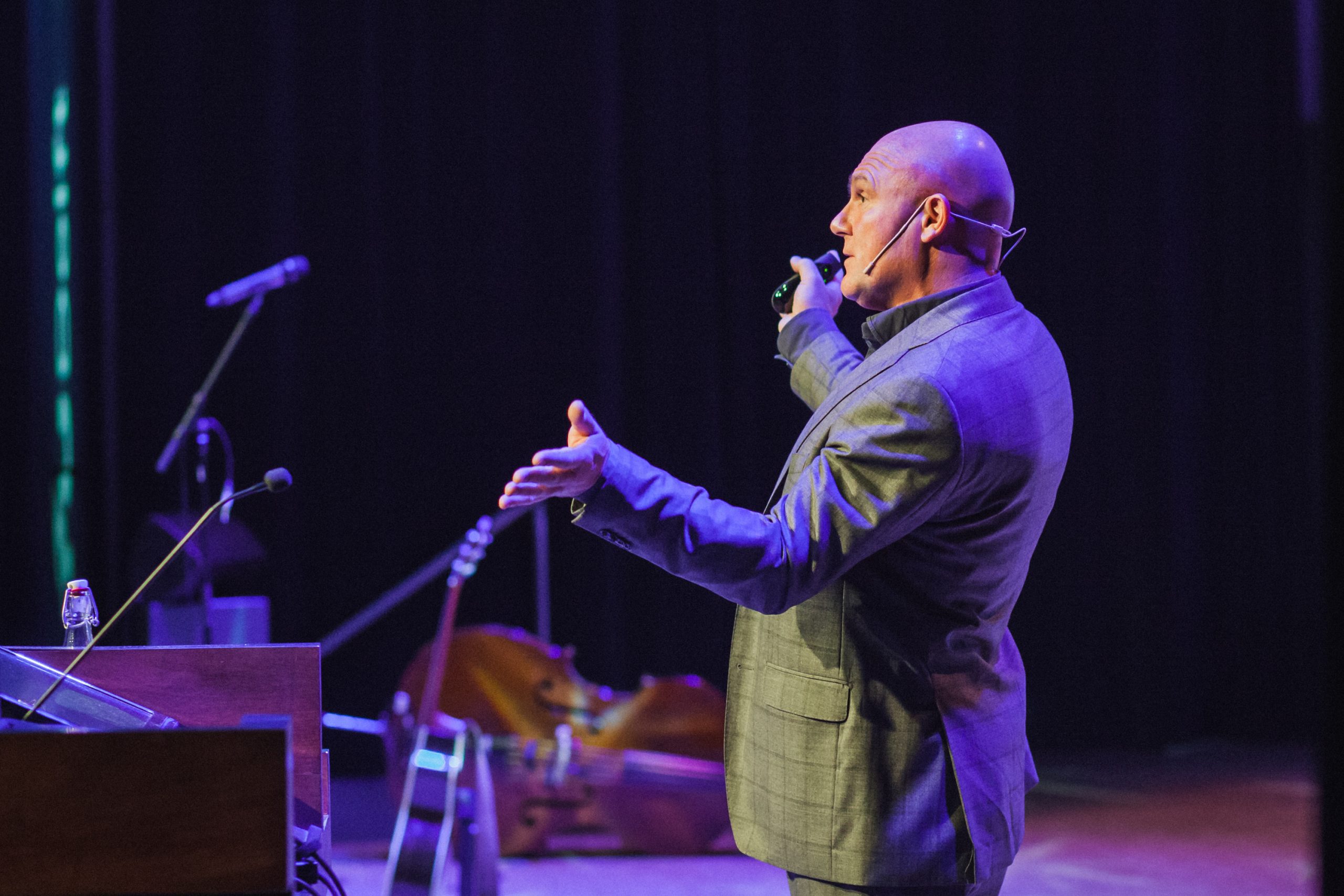The Delft Health Initiative has been driving technological innovation in healthcare for nearly 10 years. A new lecture series, open to the public, aims to unite these technolo
Andre Kuipers during his lecture. (Photo: Ernst van Haalbeeld)
The kick-off evening, held on 5 July and hosted by science communicator Julia Cramer, aimed high by combining health technology from the tiny scale of cells to the immense scale of space. About 200 people, including some very young future recipients of breakthrough health technology, spent a warm summer evening contemplating the future.
Impossible materials
Inspired by cloaking materials – Professor Amir Zadpoor discussed the development of new bio-metamaterials with ‘impossible’ properties for the treatment of skeletal diseases and complex bone injuries. “As an engineer, I look at geometry,” he says “at many different scales.” At the macro level, his implants can be shaped to the patient specific geometry. Even more importantly, bone cells need to be encouraged to grow. “If you don’t use them, lose them,” says Zadpoor. He uses a combination of micro-structures – shaped like bow-ties and honeycombs – to ensure that implants always push against bone regardless of the direction of stress. At the nano level, he prints surface features that can kill bacteria and programme stem cells into bone growth. “Such lithographic processes only work in 2D, but we can fold them into 3D implants using origami techniques,” says Zadpoor.
Bio-electronic medicine
“My research is about restoring 100% health using bio-electronic medicine,” professor Wouter Serdijn says. He presented on the use of electronics as a much better targeted replacement of chemical drugs. By connecting a bio-medical pulse generator to the vagus nerve, remarkable health improvements have been achieved in some in some patients with rheumatoid arthritis or Crohn’s disease, including a few total remissions. “By sending electronic signals to the spleen, the inflammatory reflex of the body can be readjusted.”
Current devices are bulky and aesthetically unsightly aluminium boxes. Serdijn plans to use flexible electronics and improved chip technology to reduce their size to a cubic centimetre or even smaller. He also works on improving the electrical contact with the nerve and on making these devices better attuned to the needs of each individual patient. “We don’t know why bio-electronic medicine is successful in some patients and not all patients,” says Serdijn.
Unhealthy environments
As keynote speaker, astronaut Andre Kuipers explained that space is fantastic, but an unhealthy place to be. Astronauts experience fluid shifts, and serious backpain as their body length increases up to four centimetres. Lack of gravity furthermore leads to bone loss, even when spending two hours per day performing bone-loading physical exercises.
The open discussion following his presentation, however, gave no clear insights as to how to ameliorate astronauts’ aches and pains using the health technology presented earlier in the evening.
- The Delft Health Initiative fosters the collaboration between the many health researchers at the TU Delft and at nearby university and other medical centres. It plans to organise four public lectures per year. The next one, on dementia, is planned on 8 November 2018. Check the website for updates and details.


Martijn Engelsman, freelance science writer
Martijn Engelsman / Freelance science writer



Comments are closed.